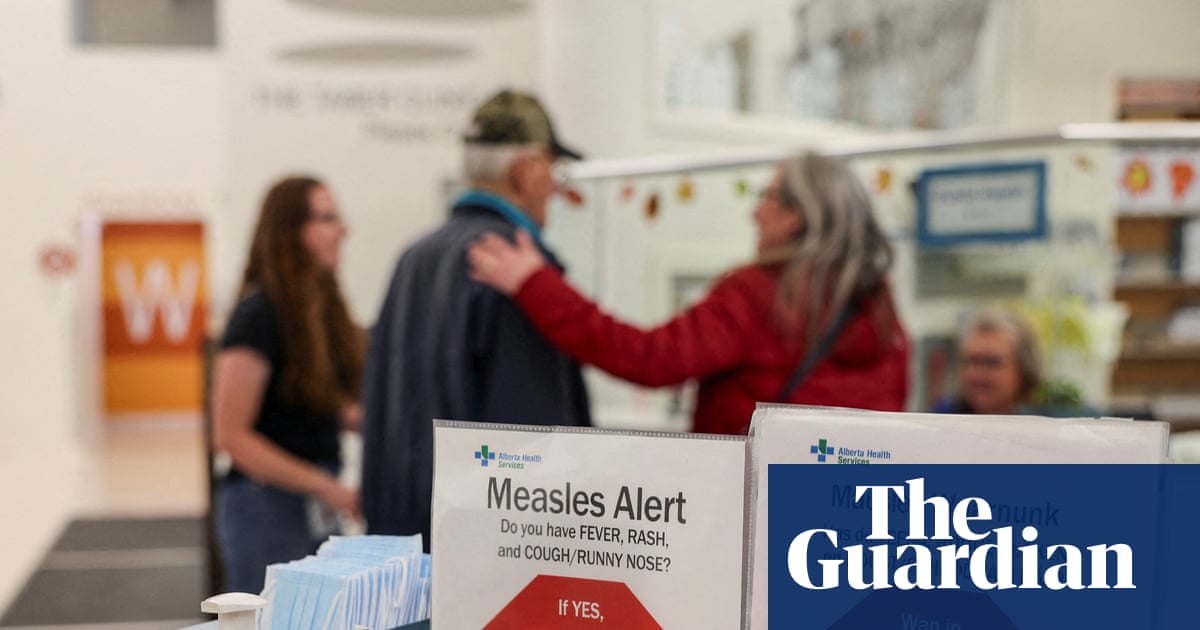‘Humanity has three great enemies: fever, famine and war. Of these, by far the greatest, by far the most terrible, is fever.” Thus spake the revered physician Sir William Osler, and thus quoteth Dr Chris van Tulleken at the start of this hour-long trip into terror, entitled Disease X: Hunting the Next Pandemic. Buy your bunker and pack your go-bag as you watch.
Van Tulleken is an associate professor at University College London, a practising doctor in infectious diseases and a tremendously affable sort, committed to making complex medical matters accessible to a wide audience. This makes his documentary about where and what the next pandemic virus will be (“It’s out there, trying to get into the human population every day”) a strangely jolly while utterly comfortless watch. I guess a spoonful of sugar helps the medicine – and contemplation of an existential threat – go down.
So, what do we know? The short answer is: too much, and not enough. With the help of experts, Van Tulleken takes us through the sprawling virus families that give us the likes of Ebola, Marburg, Nipah, yellow fever, avian flu and Covid-19 (the last of which “may have been just a warning shot”), the means by which viruses can jump species, and how they could mutate to become the one that takes us all out. In other words, it would be worse than the bubonic plague, which is estimated to have killed 50% of the European population back in the day. Worse, too, than the Spanish flu pandemic in 1918, which killed more people than the first world war. And worse, too, than Covid, that “warning shot” from a global armoury stuffed with uncountable numbers of potentially fatal viruses, which has killed more than 7 million people worldwide since it emerged in 2019.
Like the world’s nicest, yet most terrifying, uncle, Van Tulleken explains that all that is required is for a virus to spread from a host, such as a bat or a bird, to a population with no herd immunity – that’s us – and for that virus to become airborne (enabling speedier transmission). Et voilà! You’re dead. And I’m dead. Or 10-15% of the infected are dead (in the case of severe acute respiratory syndrome, Sars). Or 35% (Middle East respiratory syndrome, Mers). Or 40% (H5N1, AKA bird flu, which has already moved to cows, so you may want to curtail your raw milk habit). Or 40-70% (Nipah). You get the idea, I’m sure. None of it’s good.
Especially as none of the above are Disease X. Our luck is still holding. Well, our luck and monitoring systems. Van Tulleken visits the World Health Organization (WHO) headquarters in Geneva and sits in on one of the daily meetings of its public health intelligence unit as it collates reports from – usually far-flung, vulnerable – countries on growing disease hotspots. There is yellow fever in the Americas, anthrax in Uganda, haemorrhagic fever in Iraq … any one of which could explode or mutate into a more deadly variant. Or a report could come in revealing something completely new. I imagine if Disease X is airborne, a dome is lowered over Geneva that seals the WHO off to give us a fighting chance of survival. This isn’t mentioned by the mathematicians who demonstrate the modelling of viral spread (turning the dials of death rate, transmissibility and government and social responses up and down to fascinating effect), but I’m sure someone will think of it soon enough.
The number of viruses becoming zoonotic – making the leap from animals or birds to humans – is increasing as we humans encroach on their territories, forcing ourselves into proximities nature never intended. Van Tulleken visits a Malaysian village destroyed by an outbreak of the Nipah virus, which arose as a result of its pig farming – a risk that can only increase for us all as such processes becomes more industrialised. At the same time, funding for disease surveillance and research into viruses is being cut (in the US especially, as the Trump administration continues its assault on public health measures and the Centers for Disease Control and Prevention). Humans, it seems, are monumentally stupid and shortsighted enough to fritter away every advantage afforded by the phenomenal technology that exists to identify new virus variants, sequence their wily strands of DNA and develop vaccines against them, in order to save a few dollars now rather than millions of lives in the future.
Pack well, my friends. See you in the bunker.

 1 month ago
69
1 month ago
69

















































